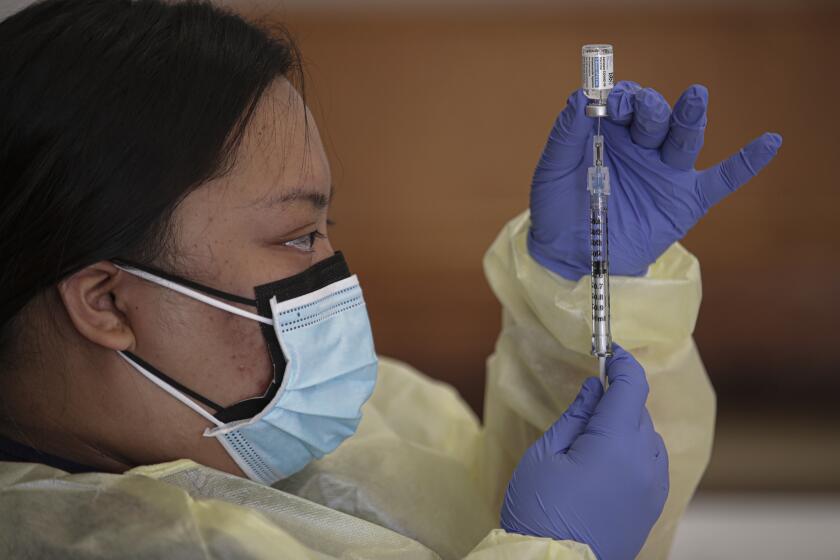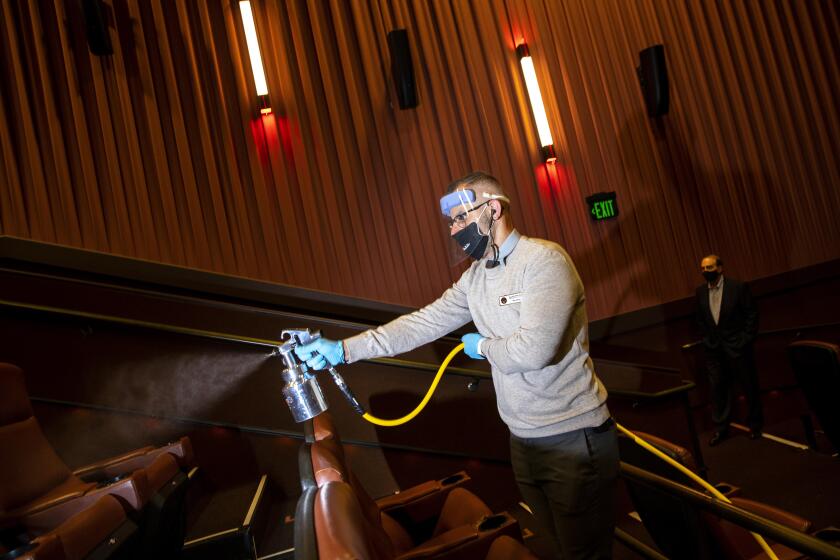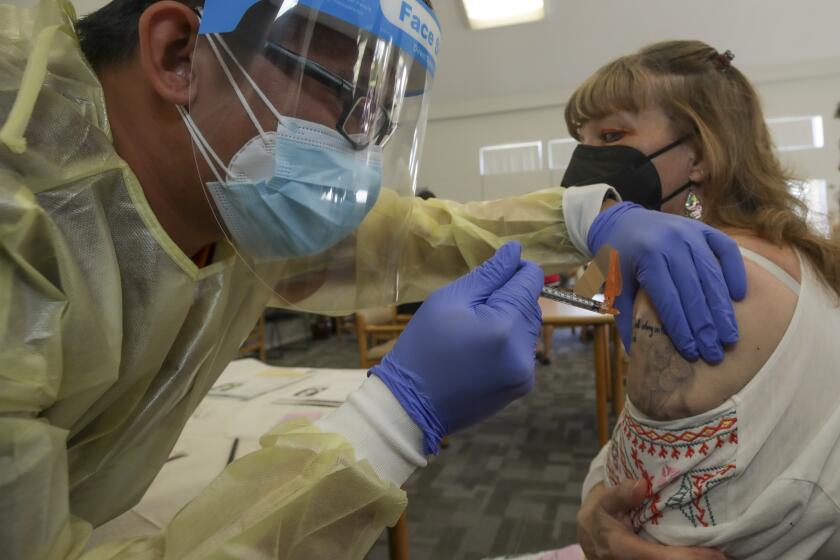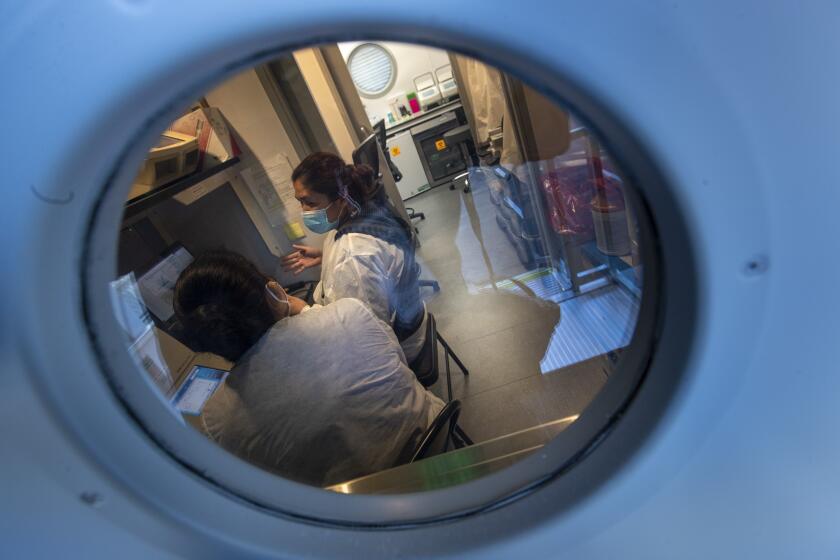Americans who are fully vaccinated for COVID-19 can travel, CDC says
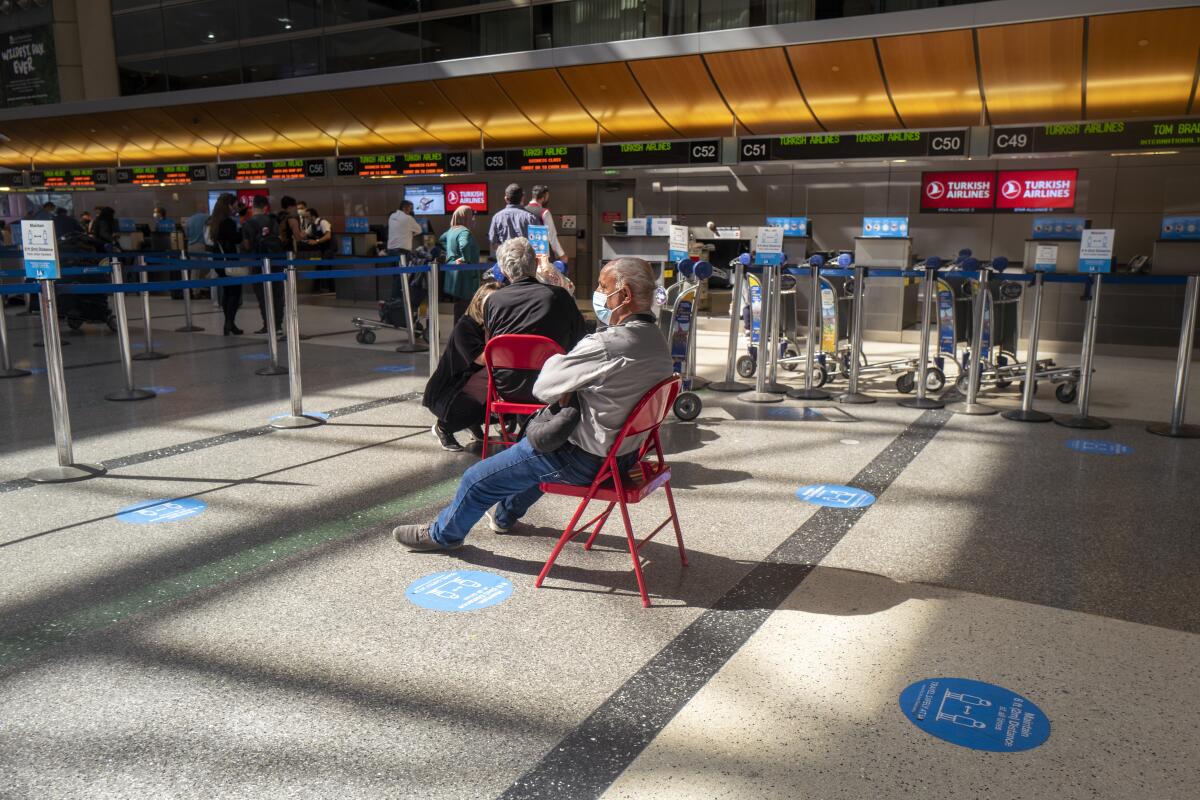
- Share via
After a year defined by upheaval and interruption, this week brought tantalizing samples of what was once considered normal.
The Centers for Disease Control and Prevention on Friday updated its travel guidance to allow people who are fully vaccinated against COVID-19 to travel within the United States and abroad as long as they continue to take precautions such as wearing a mask. Those traveling domestically would no longer be required to self-quarantine upon arrival, or obtain a negative test before or after their departure.
Mere hours later, California retooled its reopening blueprint to outline the eventual resumption of indoor events and performances.
And Los Angeles and Orange counties, two of California’s largest, were cleared just days ago to further ease some of the pandemic-related restrictions that have long shackled their economies.
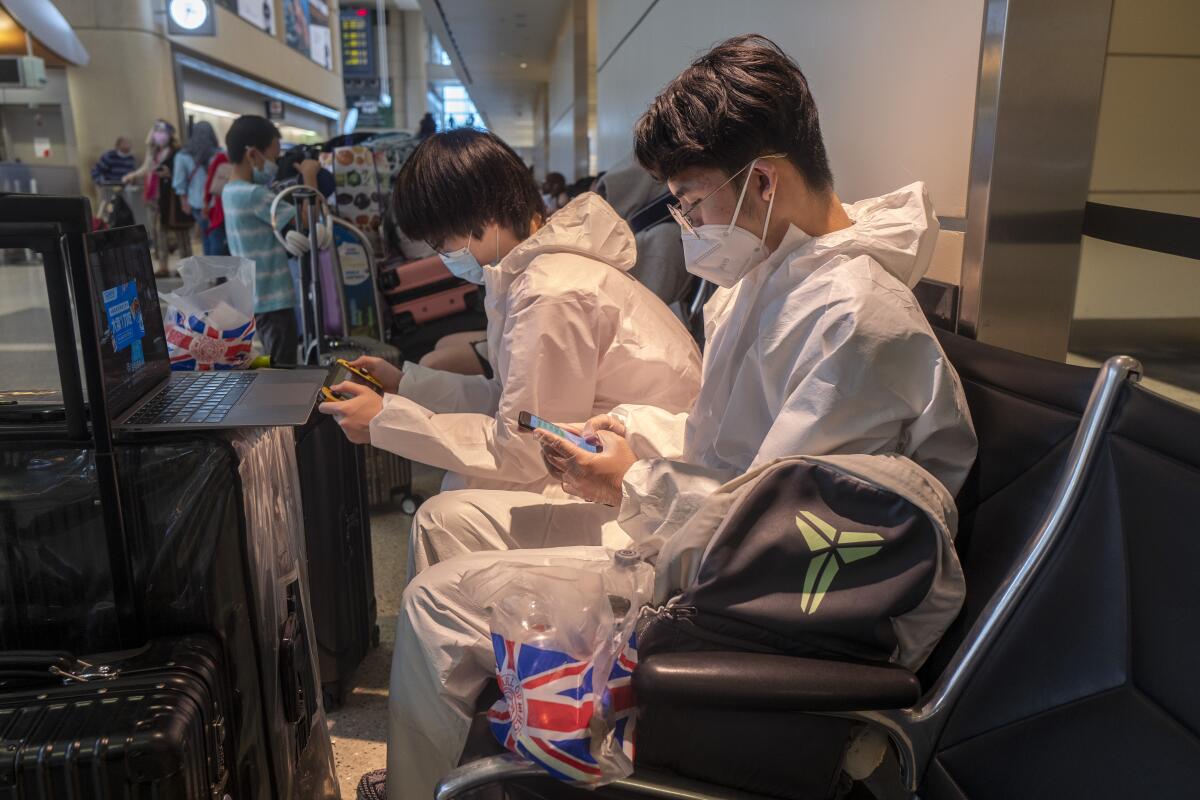
Taken together, this week’s developments point to a future that has long seemed far-off and uncertain — one in which the coronavirus’ path of destruction is dramatically lessened and, eventually, eliminated entirely.
But these hopeful signs come at an uncertain time, when there is reason both for hope, as growing numbers of Americans are vaccinated for COVID-19, and rising fear, as the number of coronavirus cases surges across the country.
“This disease is not taking Easter weekend off. This disease is not taking spring break off,” Gov. Gavin Newsom said Friday during a news conference in San Diego. “This disease is as deadly as it’s ever been.”
The COVID-19 response has become a race of vaccines versus variants and officials are urgently trying to get doses into as many arms as possible.
Even the CDC’s latest travel guidance was a double-edged sword — certainly welcome news for people who have been kept apart from their loved ones amid the pandemic, but couched with extreme caution.
“While we believe that fully vaccinated people can travel at low risk to themselves, CDC is not recommending travel at this time, due to the rising number of cases,” agency director Dr. Rochelle Walensky said during a briefing Friday.
She herself acknowledged the apparent contradiction.
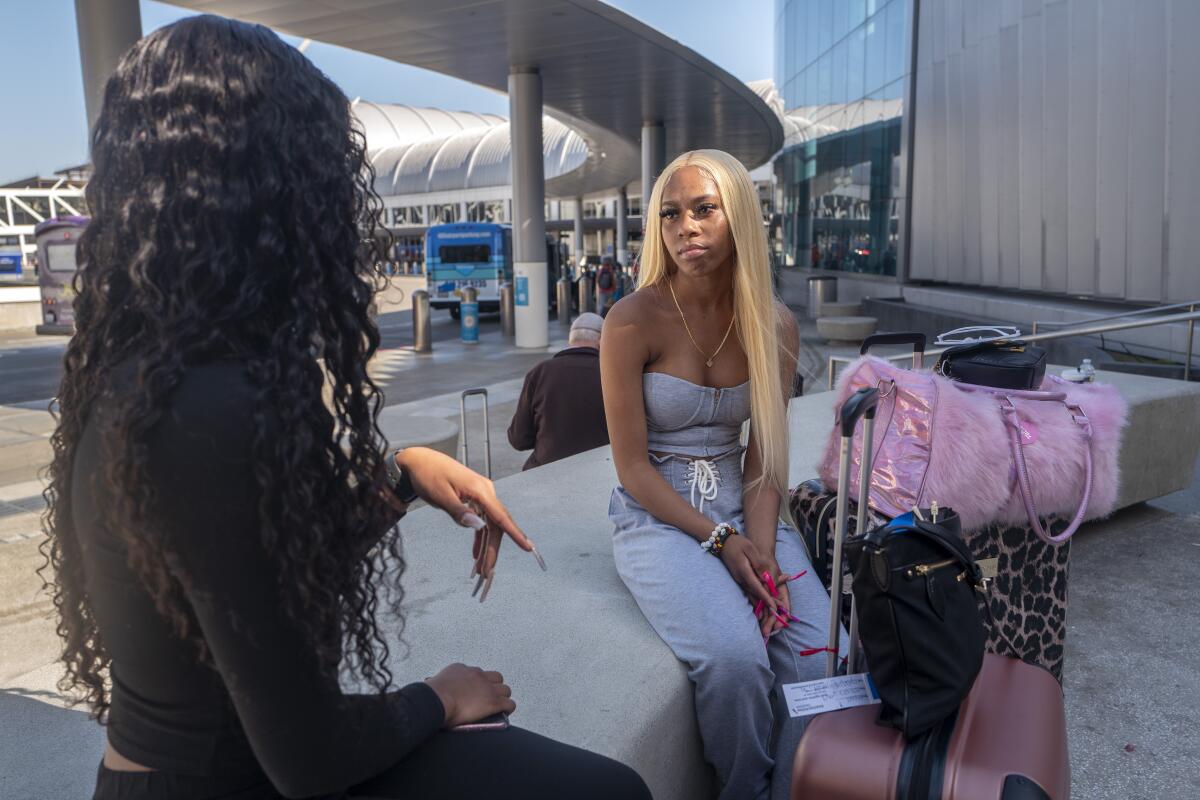
“On the one hand, we are telling you we are worried about rising cases, to wear a mask and to avoid travel. Yet, on the other hand, we are saying that if you are vaccinated, evolving data suggests that traveling is likely lower risk,” she said.
Such seemingly conflicting messages by health officials have been frustrating and whiplash-inducing at times.
However, that’s to be expected when dealing with a new virus, according to Dr. Muntu Davis, L.A. county’s health officer.
“This is naturally what happens inside of a pandemic,” he said Friday. “As you start to see how the virus acts, as you start to see when you have new counter-measures, whether that be vaccine or treatment, then we start to learn more. But until we have that information, we have to operate with a lot of caution, because everyone is at risk.”
For instance, there’s growing evidence that available vaccines may be highly effective at curbing coronavirus transmission — which could help inform public health measures moving forward.
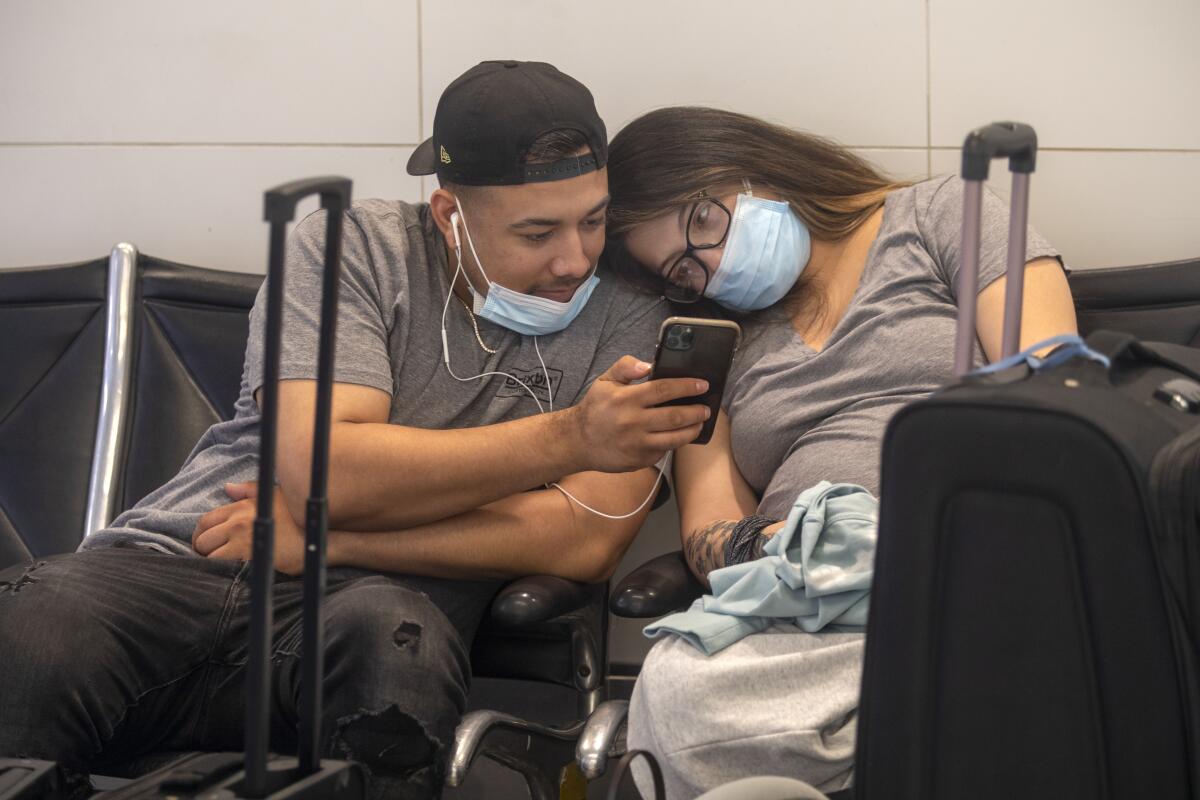
“Vaccinated people have a much lower risk of spreading the virus, but it’s not a water-tight guarantee that they can’t be infected or that they cannot spread it,” said Andrew Noymer, an associate professor of public health at UC Irvine.
Per the new CDC guidelines, fully vaccinated people who are traveling internationally do not need to be tested for COVID-19 before leaving the United States unless their destination requires them to be, and they do not need to self-quarantine upon arriving in the country, federal health officials said. However, all air passengers coming into the U.S. must have a negative coronavirus test result from no more than three days before their travel date.
The CDC also recommends that international travelers get tested three to five days after travel.
Domestic travelers who are fully vaccinated — meaning two weeks have passed since their second dose of the Pfizer-BioNTech or Moderna vaccine or their one and only Johnson & Johnson shot — do not need to self-quarantine upon arriving at their destination and “do not need to get tested before or after travel unless their destination requires it,” according to the CDC.
Indoor live events and performances can resume in California this month with limitations amid declining COVID-19 rates and continuing vaccinations.
That could come into play in California, where the state maintains that “nonessential travelers from other states or countries, regardless of COVID-19 vaccination status, are strongly discouraged.”
California on Thursday lifted its advisory that asked leisure travelers to stay within 120 miles of home. But health officials still recommend that all travelers get tested one to three days before starting their journeys; and that nonessential travelers get tested three to five days upon arrival into California, as well as self-quarantine for a full seven days after travel, even if their test is negative.
The state travel advisory also says nonessential travelers who don’t get tested should self-quarantine for 10 days after travel.
In a statement, the California Department of Public Health said it “is constantly reviewing science, data and evidence, as well as evaluating CDC recommendations to update our guidance” and pledged to notify the public of any changes to the state’s advisory, if and when they occur.
The CDC travel guidance is one of the most substantial updates seen yet, said Dr. George Rutherford, an epidemiologist and infectious diseases expert at UC San Francisco.
But loosening some restrictions doesn’t mean that the danger has completely evaporated.
“All you need is for everyone to start acting like they’re on spring break at South Beach,” Rutherford said.
Health officials have long warned against unnecessary or recreational travel, saying such journeys could fuel a new coronavirus surge.
That’s a particularly pressing concern in California, which has seen steady improvement in its coronavirus metrics even as other states began to contend with worrying increases.
CDC figures show that California’s latest seven-day case rate per 100,000 people, 43.9, is the third-lowest among all states and well below the national rate of 134.4.
By comparison, the highest recent rates were recorded in Michigan, with 411.1 cases per 100,000 people; and New Jersey, 366.4.
Over the same time period, the comparable rates were 353.6 in New York City; 256.7 in the rest of New York state; 222.7 in Pennsylvania; 168.4 in Florida; and 76.5 in Texas.
Noymer believes that although that context has not always been at the forefront of the CDC’s messaging, the latest guidance in loosening restrictions does not appear premature. At least not for California.
“If you look at the world through California-tinted glasses, things are still really good,” he said, referring to the state’s low transmission rate.
But he added: “There’s no guarantee.”
This level of coverage, though far short of herd immunity, provides some defense against the COVID spikes seen elsewhere in the U.S., officials say.
As more and more people are vaccinated, though, talk is increasingly turning to what additional activities could soon be safe to resume.
Starting April 15, California will allow indoor live events to resume with limitations, meaning an imminent return of things such as concerts and theater performances that have long been off limits.
Under new state guidance unveiled Friday, those types of activities would remain subject to capacity limits and other safety modifications. However, attendance caps would be raised if all guests at a particular event have either been tested for COVID-19 or can show proof that they’ve been fully vaccinated.
“By following public health guidelines such as wearing masks and getting vaccinated when eligible, we can resume additional activities as we take steps to reduce risk,” Dr. Mark Ghaly, California’s health and human services secretary, said in a statement.
To date, 32% of Californians have received at least one vaccine dose, CDC data show, and nearly 19 million doses have been administered throughout the state.
However, only about 16.8% of Californians have been fully vaccinated at this point.
As talk of vaccine passports or a process to verify vaccinations rises, a foolproof plan to determine who meets vaccine requirements will be crucial, Rutherford said.
New advisory asks people, even those vaccinated, to get tested before and after they travel
The urgency to reopen further in California and elsewhere comes as more people get vaccinated, pushing policy makers to ease restrictions, according to Kirsten Bibbins-Domingo, chair of the epidemiology and biostatistics department at UC San Francisco’s School of Medicine.
But while supply and distribution have steadily increased, she noted pockets of inequity continue to exist through the state.
At the federal level, however, there is optimism that the nation will have a sufficient COVID-19 vaccine supply to accommodate all willing adults later in the spring.
How many more Americans will become infected, require hospitalization or die from the disease in the months before widespread immunization is an open question, however — and one officials said should be a clarion call for everyone to remain vigilant.
“The reality is that the act of traveling and the act of people mixing does lead to these spikes,” Bibbins-Domingo said. “I’m not suggesting it’s a wrong decision — I’m suggesting that to read that decision and say, ‘We’re out out of the woods,’ would be a dangerous misread.”
More to Read
Sign up for Essential California
The most important California stories and recommendations in your inbox every morning.
You may occasionally receive promotional content from the Los Angeles Times.
